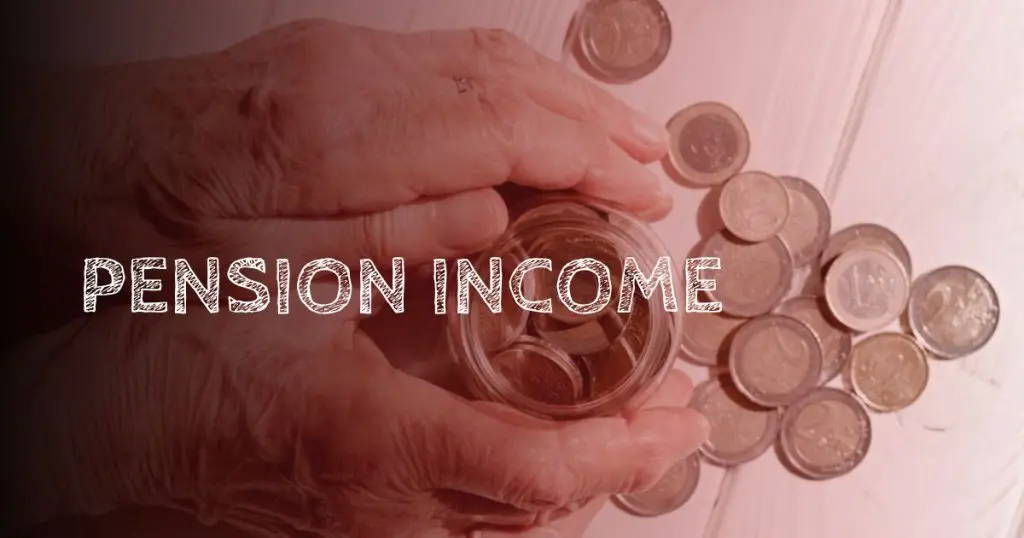Pension means a regular payment, made to retired individuals from an investment fund to which an employer has contributed during their working life.
How Pension Incomes Are Taxable?
Pension incomes are totally depends on the type of pension receive. Pensioners can avail of tax deductions to reduce their taxable income
- Standard Deduction – Amount: ₹50,000
- Section 80C – Limit is up to ₹1.5 lakhs
- Section 80CCD(1B) – Limit up to ₹50,000 for contributions to the National Pension System (NPS).
- Section 80D – Limit up to ₹25,000 for health insurance premiums for self, spouse, and dependent children. Additional ₹50,000 for premiums for senior citizen parents.
- Section 80DD – Limit upto ₹75,000 for expenses related to the medical treatment, training, and rehabilitation of a disabled dependent. ₹1.25 lakhs for severe disability.
- Section 80DDB – Limit is up to ₹40,000 for medical treatment of specified diseases. ₹1 lakh for senior citizens.
- Section 80TTB – Limit up to ₹50,000 for interest on deposits for senior citizens.

How To Calculate Pension Incomes?
Pension income is taxed as per the applicable income tax slabs and rates.
Let us take an example to get an idea how to calculate-
Example :
Mr. Ayush Gupta is 66 years old and a retired person. He receives a monthly pension and the details are –
Monthly Pension received ₹60,680
Monthly Pension before commutation ₹1,02,800
Dearness Relief 42% up to 30-06-23 and from 1-07-23 is 46%
Interest on deposit received ₹1,50,0000
Purchased NSC ₹1,00,000
Deposited in Bank for 5 years under Tax Saving Scheme ₹74,000
Annual premium on health insurance for self ₹76,000
Solution: For calculating tax under old regime
| Particulars | Amount (Rs.) |
| Pension Income [60680*12] | 728160 |
| Dearness Relief | |
| 1-03-23 to 30-06-23 [102800*42%*4] | 172704 |
| 1-07-23 to 29-02-24 [102800*46%*8] | 378304 |
| Income From Other Source | |
| Interest on Deposit | 150000 |
| Less : Deduction for interest | (50000) |
| 1379168 | |
| Less : Standard Deductions | (50000) |
| 1329168 | |
| Less : Deduction under 80C | |
| NSC & FD Interest | (150000) |
| Less : Deduction under 80D | |
| Health Insurance Premium | (50000) |
| Taxable Income | 1129168 |
| Taxable Income after round off | 1129170 |
| Tax Amount | |
| Upto 3 Lakh | NIL |
| Upto 5 Lakh [200000*5%] | 10000 |
| Upto 10 Lakh [500000*20%] | 100000 |
| Balance [(1129170-1000000)*30%] | 38751 |
| Total Tax | 148751 |
| Cess @4% | 5950 |
| Total Income Tax Payable | 154701 |
Solution: For calculating tax under new regime
| Particulars | Amount |
| Pension Income [60680*12] | 728160 |
| Dearness Relief | |
| 1-03-23 to 30-06-23 [102800*42%*4] | 172704 |
| 1-07-23 to 29-02-24 [102800*46%*8] | 378304 |
| Income From Other Source | |
| Interest on Deposit | 150000 |
| 1429168 | |
| Less : Standard Deductions | (50000) |
| 1379168 | |
| Taxable Income after round off | 1379170 |
| Upto 3 Lakh | NIL |
| Upto 6 Lakh [300000*5%] | 15000 |
| Upto 9 Lakh [300000*10%] | 30000 |
| Upto 12 Lakh [300000*15%] | 45000 |
| Balance [(1379170-1200000)*20%] | 35834 |
| Total Tax | 125834 |
| Cess @4% | 5033 |
| Total Income Tax Payable | 130867 |
FAQs
Yes, pension income is taxable under the head salaries.
The ITR limit for pensioners is based on the total income and age.
For senior citizens (aged 60-80 years), income up to Rs 3,00,000 is exempted from tax. Beyond this, the tax rates are applicable in both Old Tax Regime and New Tax Regime (Default tax regime).
Pension paid to retired employees are subject to TDS under the “Salary” income head. However, if income paid to family members of pensioners is classified as “income from other sources” and is not subject to TDS.
For pensioner Form 16 is issued by the bank.
Pensioners can claim a Rs. 50,000 deduction on pension income. In case of senior citizens, no tax is if income is up to Rs. 5,00,000 under old tax regime and under new tax regime limit is up to Rs. 7,00,000 and rebate can be claim up to Rs. 25,000.